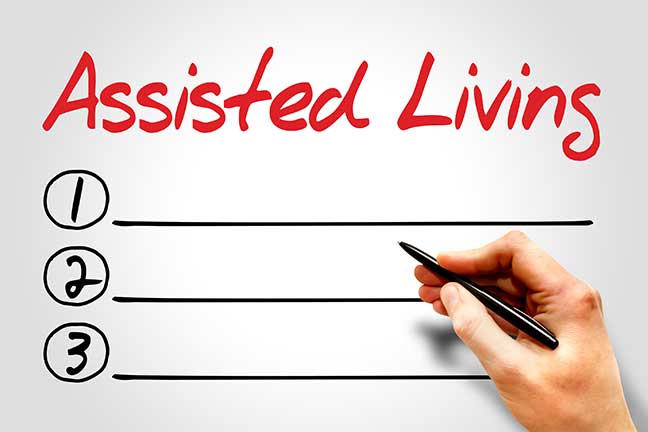So you need to move into an assisted living facility but don’t have the funds to pay for it yourself. Don’t panic – there are options available to give you the care you need without going into debt or moving in with a family member. Many facilities offer ways to subsidize bills for those who can’t afford the full cost.
In this blog post, we’re going to help you find an assisted living community that won’t break the bank. The important thing is not to assume you’re out of luck just because you’re short on cash.

How Much Does Assisted Living Cost?
Before we dive into how to save on assisted living costs, how much would it cost to cover it by yourself? The cost of assisted living varies greatly depending on the level of care and services provided, as well as your geographic location. According to the National Care Planning Council, the average monthly rent for a one-bedroom apartment in a community is around $4,500 a month. However, costs range from $1,500 up to $6,000 a month or more for high-end assisted living communities with lots of amenities and high staff-to-resident ratios.
Some of the major factors that determine the cost of assisted living include:
- Level of care and services offered: Basic assistance with activities of daily living like bathing, dressing, eating, and medication management cost less than intensive health care services. Memory care or Alzheimer’s units also typically cost more.
- Room: Private rooms and apartments also cost more than shared rooms. Upscale communities with lots of amenities like fine dining, housekeeping, transportation, and entertainment will charge higher monthly fees as well.
- Location: Assisted living & nursing home costs are often higher in affluent suburban and urban areas. Rural and small-town facilities typically charge less. Cost of living in the local area also impacts prices.
- Additional fees: Most assisted living rent does not include the cost of medications, medical care, entertainment, or therapies. There could be additional charges for these types of extras as well as one-time senior living community fees.
Bottom line is that assisted living is not cheap, with median costs of over $50,000 each year. However, for those who need help with daily activities and peace of mind, this cost can absolutely be worth it. And fortunately there are ways to help pay for assisted living — so let’s dive into those.

Tapping Into Your Long-Term Care Insurance
If you want to get into assisted living on a budget, the first thing to check is your insurance. If you happen to have long-term care insurance, you’re likely able to use it to help pay for assisted living costs. Most policies provide coverage for assisted living facilities, especially if nursing home style care is needed. Here are some ways to tap into your policy:
- Check if your policy covers assisted living: Call your insurance provider and inquire about your coverage for assisted living facilities. Look into if they have preferred providers they work with. This can help ensure your costs are covered.
- Compare your policy benefits to facility costs: Look at how much your policy will pay out each day for assisted living and compare that to the daily rates of facilities you’re interested in. You want to find places that accept what your insurance will provide.
- Choose a facility covered under your plan: Pick from preferred places if your insurance offers that option. Otherwise, choose a facility that accepts the policy coverage you have. Some allow you to pay any difference in cost if needed.
Using your long-term care insurance, in combination with other resources if necessary, is a great way to afford assisted living with limited or no money of your own. With the right planning, you can make this move possible.
Using Veterans Benefits to Cover Assisted Living
Don’t have long-term care insurance? If you’re a veteran, you have benefits that can help pay for assisted living. The Department of Veterans Affairs (VA) offers 2 major programs that could cover some or most of your assisted living costs:
VA Pension
First, VA Pension provides monthly payments to low-income veterans who’re 65 years of age or older or disabled. To qualify, you must have at least 90 days of active service, including at least 1 day during a wartime period. Your yearly family income must be below the maximum annual pension amount decided by Congress. The more assistance you need with daily activities, the higher your pension amount could be.
Aid And Attendance Program
Next, Aid and Attendance program provides additional funds on top of the standard VA Pension for assisted living residents who require help with daily activities like bathing and dressing. To qualify, a doctor must determine you need daily health care services. Your Aid and Attendance benefit can help pay for assisted living and in-home care.
To apply for either program, you need to provide certain details about your military service, yearly income, net worth, and your need for daily care. The application process can take 6-18 months, so start applying as early as possible. An accredited VA claims agent can help you apply for free.

Using a Portion of Your Life Insurance Police to Cover Assisted Living
Last but not least — if you have a life insurance police, a portion of it could potentially be used to help cover assisted living costs. Many policies allow you to withdraw or borrow a percentage of the benefit, known as the “cash value”, to use for living expenses.
If you have a whole life insurance policy, it builds up cash value over time that you’re likely able to withdraw. You’re going to want to check with your insurance company if assisted living expenses qualify as an acceptable reason for withdrawal and how much of the cash value is available.
Taking out a Loan Against Your Cash Value
Another option is to take out a loan against the cash value of your policy. The interest rate is typically lower than a standard loan. The loan is deducted from the benefit when the policy pays out. You continue making premium payments to keep the policy active.
Some insurance companies also offer “accelerated death benefit riders” that allow you to receive a portion of the death benefit early if you need it for long-term care. The company will calculate the present-day value of a portion of the future death benefit and allow you to access that. The benefit amount paid upon death will be reduced.
FREE Phones For Seniors With EASY Wireless!!
If you’re financially struggling to afford assisted living services, we hope this blog post is able to help. But what if we told you that as an elderly individual, you could qualify to receive even more financial assistance?
That’s right! EASY Wireless is offering free phones with data to low-income seniors or families. Here’s what you receive if you’re eligible:
EASY Wireless Unlimited Plan
- FREE Unlimited Data
- FREE Unlimited Talk
- FREE Unlimited Text
- FREE SIM Card Kit and Activation
- Choose to Keep Your Number or Get a New One
To start with EASY Wireless, apply online by clicking the below:
Start Saving Today!
Start Saving Today!
Or you can come to one of the EASY Wireless’s retail stores, where our customer service agent will help you apply for your benefits.


